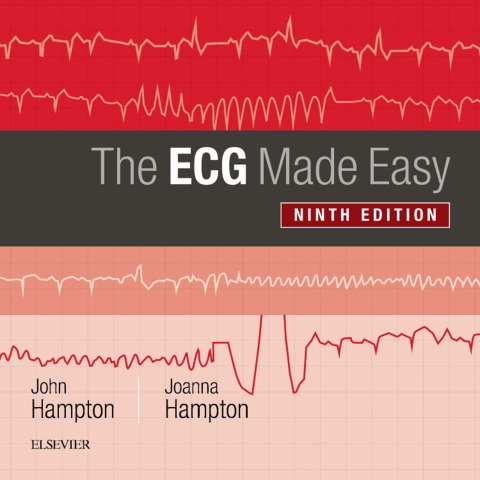Description
Efnisyfirlit
- Cover image
- Title page
- Table of Contents
- Copyright
- How to use this book
- Preface
- Introduction: Making the most of the ECG
- List of Illustrations
- List of Tables
- Part 1. The ECG Made Very Easy Indeed: A Beginner’s Guide
- 1. The ECG made very easy indeed
- What is an ECG?
- When do you need an ECG?
- How to record an ECG?
- How to interpret an ECG: The basics
- Patterns you must be able to recognize
- Part 2. The Basics: The Fundamentals of ECG Recording, Reporting and Interpretation
- 2. What the ECG is about
- What to expect from the ECG
- The electricity of the heart
- The different parts of the ECG
- The ECG: Electrical pictures
- The shape of the QRS complex
- Making a recording: Practical points
- ECG calibration
- How to report an ECG
- 3. The rhythm of the heart
- Section 1: Rhythm anaylsis using 12 L ECGs
- The intrinsic rhythmicity of the heart
- Abnormal rhythms
- The bradycardias: The slow rhythms
- Extrasystoles
- The tachycardias: The fast rhythms
- Fibrillation
- Wolff-Parkinson-White syndrome
- The origins of tachycardias
- What to do
- Section 2: Interpretation of single lead ECGs
- The identification of rhythm abnormalities
- 4. Conduction and its problems
- Conduction problems in the AV node and his bundle
- Conduction problems in the right and left bundle branches: Bundle branch block
- Conduction problems in the distal parts of the left bundle branch
- What to do
- 5. Abnormalities of P waves, QRS complexes and T waves
- The P wave
- The QRS complex
- The ST segment
- Abnormalities of the ST segment
- The T wave
- Other abnormalities of the ST segment and the T wave
- Part 3. Making the Most of the ECG: The Clinical Interpretation of Individual ECGs
- 6. The ECG in healthy subjects
- The normal cardiac rhythm
- The P wave
- Conduction
- The QRS complex
- The ST segment
- The T wave
- U waves
- The ECG in athletes
- 7. The ECG in patients with chest pain or breathlessness
- The ECG in patients with constant chest pain
- The ECG in patients with intermittent chest pain
- The ECG in patients with breathlessness
- 8. The ECG in patients with palpitations or syncope
- The ECG after a syncopal episode when the patient has no symptoms
- The ECG when the patient has symptoms at the time of recording
- Pacemakers
- Cardiac arrest
- Part 4. Now Test Yourself
- 9. ECGs you must be able to recognize
- ECGs with clinical scenarios
- ECG descriptions and interpretations
- Quick reminder guide
- Glossary
- Index
- Flowchart







Reviews
There are no reviews yet.